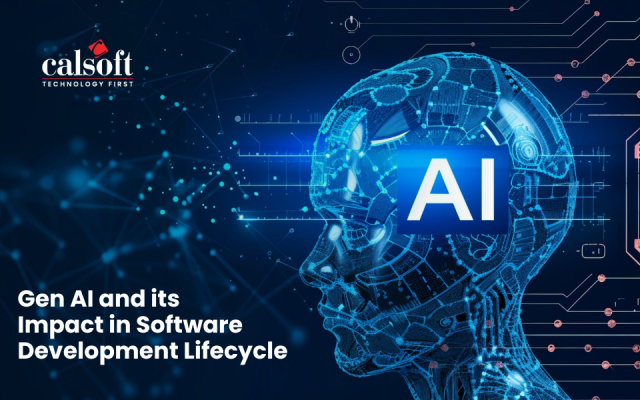Life doesn’t come with an instruction manual
BUT
Calsoft Products and Services DO!
Analysis, design, development, quality analysis, and technical publication are the most significant phases of product development. A product release is incomplete without supporting technical documents. Thus, documentation is an important part of the product release. These technical documents complement your product and complete it. That is why it is necessary to have proper documentation in place.
Since documentation is a must, it is significant to review the documentation. There must be protocols or guidelines in place for the documentation review process to ensure an efficient procedure. These documents are important for the product user, to refer them as and when required. necessary to develop technical documents that add value to the product. Read the blog to understand the challenges in technical documentation and best practices to encounter the same.
Challenges to Conquer
Like any task, documentation also comes with a set of challenges. If the documentation is not accurate or detailed enough it cannot be used as a solid reference by the user. The documentation explains the functions of the product and hence, needs to be precise and correct. It acts as a how-to for the product, so it must be given due importance too. One of the major challenges that documentation practices face is to be included in the project from the very beginning. Making documentation a part of the project from the start is a way of ensuring the quality of these technical documents. Once the first draft of the document is ready; the only thing left is to have the content reviewed and verified.
Documentation is a necessary but overlooked part of the production process. It is an accompaniment to the product. It helps the user understand the functions correctly. So, precise, and concise documentation is essential. Although it sounds easy in theory; there are plenty of challenges to overcome during this process.
Quick Tips for Documentation
The first step to include in documentation practice is to proofread the technical documents thoroughly. Proofreading is the final check for errors on the printed text before publication. It is an incredibly necessary step as it adds value and accuracy to any piece of document. The proofreader needs to be extremely diligent in identifying mistakes. The errors can vary from spelling mistakes not identified by spell checker, checking complete sentences, grammar and punctuation, typos, etc.
Proofreading
Here are some guidelines for the proofreader to keep in mind while working on technical documents:
- Prepare a checklist of objectives to achieve as a proofreader.
- Focus on errors in grammar, punctuation, typos, and spelling.
- Present technically accurate, logical, and complete pieces of information that meet customer and stakeholder requirements.
- Review, update, and get approval prior to publishing a document.
- Define changes and revision status of documents for quick reference.
- Maintain version control so that documents are easily available.
Do’s
The document needs to have structure, context, flow of content, and a good readability level to be complementary to the product. Certain things that help the documentation process run smoothly includes:
- Knowing your audience and sticking to a prescribed standard of style.
- Pre-write a content draft to understand the flow and gaps of knowledge at your end.
- Make use of active verbs to convey sets of steps or processes.
- Make use of clear, unambiguous words and concise sentences.
- A smooth transition between two topics and maintaining a flow for better comprehension.
- When you are using tables or figures, make sure the data is valid. Present the data in a table or a list.
- Give a thorough review of the entire content and re-write sections necessary.
- Look for mistakes, typos, breaks in accuracy, ambiguity, etc.
DON’Ts
There are a few things one should avoid doing in the documentation process. This affects the flow of the context and might make comprehension difficult.
- Do not use abbreviations unless specified to do so.
- Do not use long noun strings to modify the last noun of a sentence.
- Do not repeat the obvious conclusion of an action.
- Do not rush to send the content for publishing without review.
- Avoid writing long paragraphs, instead use bullet lists.
Grammar and style
The documentation process needs to maintain a certain standard when it comes to grammar and style. Following these guidelines could make the readability of the document better:
- Comprehensible, simple structure, and conciseness.
- Correct spellings.
- Using active voice vs. passive voice.
- Use of parallelism for better understanding.
- Proper usage of articles where necessary.
- Accurate punctuation.
- Use of bulleted and numbered lists where possible.
Consistency in the use of terms, product names, component names, and headings.
Documentation Review Process
The documentation review process simply indicates that the content should be error free, readable, and easy to comprehend. It correctly explains the application, purpose, and functionality of the product. Reviewing fixes the context and flow of the content which plays a role in resolving queries that may arise for the user.
The documentation review process works best when reviewers follow a certain set of guidelines. This allows the content to maintain quality, structure, and flow. The review process mainly consists of the following steps:
- Mandatory self-review
- Macro level review that includes document structure and layout.
- Micro level review that consists of sentence structure, grammar, punctuation, and style are correct.
- Immerse yourself in the review.
- Review from a user’s perspective and the translation and localization perspective.
- Peer review is compulsory.
- Bring to attention the shortcomings, errors, and mistakes.
- Respond respectfully.
- Micro level review that consists of sentence structure, grammar, punctuation, and style are correct.
- Editorial review.
- Check the content for flow and cohesiveness.
- Assess the readability of the content.
- Make sure the context of the writing is logical.
- Comprehensible, simple structure; conciseness.
- Spelling accuracy.
- Active voice usage, parallelism, articles, punctuation.
- Use of bulleted and numbered lists wherever possible.
- Consistency in the use of terms, product names, and component names.
- Consistency in headings
- The final document should align with the checklist and verify if all review comments are addressed.
- The document has followed the style guide.
- All queries should be resolved.
Questions that must be asked during a review.
- Does the document cover the defined scope?
- Does the document conform to the documentation standards of the style guide?
- Is the approach logical and understandable?
- Are the chapters, sections, and paragraphs meticulously organized and structured?
- Is the content technically sound?
- Is the language and style clear, concise, consistent, and comprehensible?
- Are there any grammar, spelling, and punctuation errors?
- Are all the cross-references accurate? Are all the links working?
- Is the document formatted correctly?
Best Practices for Documentation Review
Creating a technical document is a collaborative process. It needs the combined involvement of the writer and the reviewer. By setting up documentation practices, the documents enhance the value of the product. Preparing drafts and their reviewing should go together as both stages are equally important in the document development life cycle.
Review is a process that continuously evolves. It focuses on the functional elements of a document. It allows Subject Matter Experts (SMEs) to add information that may not be available to the writer. To do this, the following are a must:
- Identifying the SME and mandatory reviewers.
- Getting timely input from SMEs.
- Getting timely feedback from reviewers.
- Resolving conflicting feedback early.
- Limiting review cycles.
Summary
Technical documentation reviews are crucial for effective and quality documentation. Therefore, it is necessary to make documentation and reviews a part of deliverables from the start – just like development or testing. This will place priority on the process and ensure that everyone involved understands the importance of proper and thorough reviews. Identify the right SMEs, and plan review cycles. This way, everyone knows what they have to do, and when, and to manage time effectively.
Given, the importance of documentation in the IT realm, writers play a vital role in delivering effective and quality documentation by asking the right questions to reviewers, mapping their requirement, and finally tailoring the information as per customer requirement.






